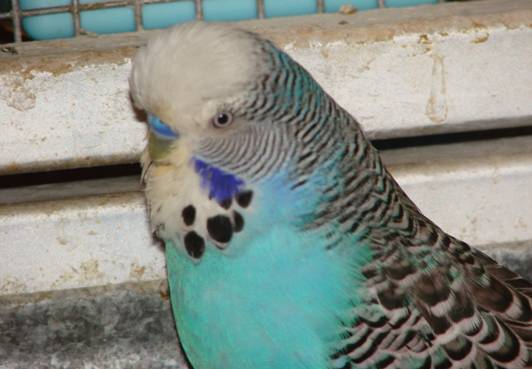
|
This Sky cock, owned by Marcia Halbert, clearly shows the fault in Normals that Walter has written about. The blue opalescence, also referred to as bloom, is visible on the back of the head, his back and the wings. If you look closely at the small area of blue color just next to the highest outer spot under the cheek patch and in between the black zebra stripes, you will see a hint of violet. This is the one area that is a flag that a bird is also carrying violet, even if you canít see it in the body color or tail or other areas.
|

